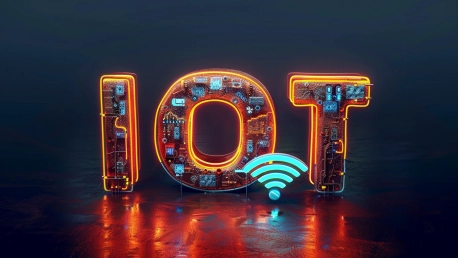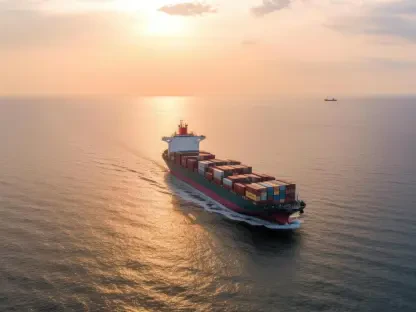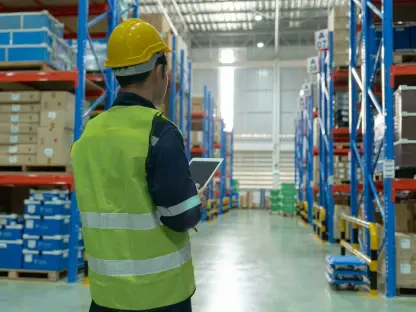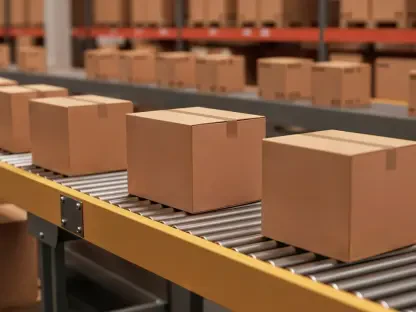In recent years, the Philippine logistics sector has undergone significant shifts. AI (Artificial Intelligence) and IoT (Internet of Things) innovations have emerged as game-changers. Their adoption addresses numerous logistical challenges that arise from the country’s unique geographic makeup of more than 7,600 islands. This article delves into how AI and IoT are revolutionizing logistics in the Philippines, enhancing efficiency, and driving growth in the sector.
Technological Revolution in Philippine Logistics
AI and IoT: A New Era for Logistics
AI and IoT adoption are key drivers transforming logistics operations across the archipelago. AI involves machine learning algorithms, predictive analytics, and data processing, while IoT encompasses a network of interconnected devices and sensors. Together, these technologies provide real-time insights and predictive capabilities, resolving issues related to the fragmented geography and intricacies of inter-island transportation in the Philippines.Government initiatives like the “Build, Build, Build” program aim to improve infrastructure, setting the stage for advanced technological integration. Despite advancements, the Philippines was ranked 60th out of 160 countries in the 2018 World Bank Logistics Performance Index. This highlights the gap in logistical efficiency, particularly in inter-island connectivity and last-mile delivery, which AI and IoT are well-positioned to bridge. The deployment of these technologies draws on connected devices and sophisticated data analytics to streamline processes that were previously cumbersome and inefficient.
Enhancing Port Operations with AI
Major ports like those in Manila, Cebu, and Davao are at the forefront of exploring AI-powered systems. These systems are designed to optimize container management operations. By predicting vessel arrivals, optimizing berth allocations, and streamlining cargo handling, AI can significantly reduce vessel waiting times. Pilot projects in these ports have shown promising results, demonstrating marked improvements in efficiency.AI’s predictive capabilities provide ports with a proactive approach to handling operations. Instead of reacting to situations as they arise, ports can now anticipate potential issues and address them before they escalate into more significant delays. This proactive stance is particularly crucial in the Philippines, where port bottlenecks and congestion have historically hindered logistical efficiency. The implementation of these technologies ensures a consistent flow of goods, minimizing disruptions and enhancing the overall throughput of these crucial gateways.
Inter-Island Tracking and Last-Mile Delivery
IoT in Action: Tracking Shipments Across Islands
IoT devices are being deployed to track shipments, proving crucial for time-sensitive deliveries across the Philippine islands. Companies like Entrego are actively investing in IoT solutions, providing real-time shipment visibility. This transparency not only enhances customer trust but also improves overall operational efficiency.The real-time data collected through IoT devices helps logistics companies manage and monitor their operations more closely. Imagine a refrigerated shipment on its way to a remote island; IoT sensors can ensure that the temperature remains constant throughout the journey, reducing the risk of spoilage and loss. This capability is pivotal in a country where inter-island transport can be unpredictable. With IoT, logistics operators can make data-driven decisions, quickly address any anomalies, and maintain the integrity of goods throughout their passage.
AI Algorithms Optimizing Last-Mile Deliveries
In congested urban areas like Metro Manila, last-mile delivery poses distinctive challenges. AI algorithms, leveraging real-time data on traffic, weather conditions, and historical delivery patterns, can craft the most efficient delivery routes. This optimization ensures quicker delivery times and reduces operational costs for logistics companies.Last-mile delivery efficiency is crucial for businesses aiming to provide high-quality customer service. By utilizing AI, companies can dynamically adjust delivery routes and schedules, responding instantly to changing conditions on the ground. This adaptability not only improves the customer experience but also boosts the overall reliability of the logistics sector. The advanced algorithms can analyze a myriad of variables to create optimal delivery scenarios, thus saving time and cutting down on unnecessary fuel consumption.
Predictive Maintenance and Supply Chain Visibility
Predictive Maintenance through IoT Sensors
For logistics operations, particularly in remote areas with limited maintenance facilities, predictive maintenance is invaluable. IoT sensors monitor vehicles and equipment, identifying potential failures before they occur. This preemptive approach reduces downtime, ensuring that logistical operations remain smooth and reliable, even in the most isolated parts of the country.Predictive maintenance driven by IoT not only reduces operational disruptions but also prolongs the lifespan of equipment. This can lead to significant cost savings for logistics companies, providing a return on investment for the implementation of these advanced technologies. By leveraging the data from these sensors, logistics companies can better forecast when maintenance should be carried out, thus avoiding costly repairs and unanticipated breakdowns.
Achieving End-to-End Supply Chain Visibility with AI
AI-powered analytics platforms are integral for achieving comprehensive supply chain visibility. With improved visibility, logistics companies can better manage inventory and accurately forecast demand. These capabilities are particularly critical in the Philippines, where supply chains must navigate a geographically fragmented landscape.Enhanced visibility afforded by AI helps mitigate risks associated with supply chain disruptions. By analyzing data trends and potential bottlenecks, AI platforms help logistics companies develop contingency plans and maintain a steadier flow of goods, even in unforeseen circumstances. This heightened visibility ensures that logistics providers can react quickly to changing conditions, thereby upholding the efficiency and reliability of the overall supply chain.
Impact on Key Ports and Global Connectivity
Transforming Key Ports with AI and IoT
In recent years, the logistics sector in the Philippines has seen considerable transformation, largely driven by advancements in Artificial Intelligence (AI) and the Internet of Things (IoT). These technologies have proven to be pivotal in overcoming the myriad logistics challenges posed by the Philippines’ distinctive geographic structure, which spans over 7,600 islands. AI and IoT are making waves in the industry by introducing innovations that improve efficiency, streamline operations, and foster sectoral growth. For instance, AI algorithms can optimize delivery routes, reducing fuel consumption and delivery times. IoT devices, meanwhile, provide real-time tracking and monitoring, ensuring the safety and condition of goods throughout the supply chain. This technological revolution not only addresses logistical issues but also propels the industry forward, aligning it with global standards. As these technologies continue to evolve, their impact on logistics in the Philippines is set to expand, promising even greater enhancements in efficiency and significant growth opportunities for the sector, ensuring it remains competitive in an increasingly globalized market.









